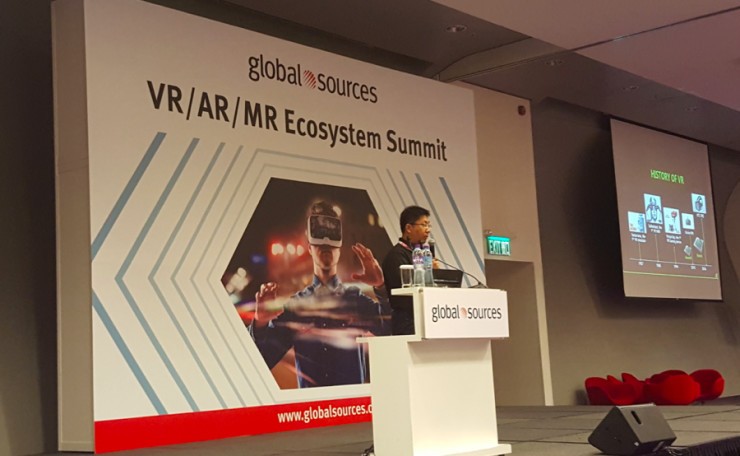In April of this year, the VR industry ushered in the world's first VR technology standard - 20ms delay, refresh rate above 75Hz and gyroscope refresh rate above 1K. This standard release means that the game rules of VR helmet have changed. We just call the low-end VR that meets the standard, and the standard is not drawn to the ranks of the cottage.
This article refers to the address: http://
This topic was also discussed at the VR/AR/MR Ecosphere Summit Forum at Global Sources Mobile Electronics. Huang Tanwei, President of Global Sources Electronics Group, said that the VR ecosystem needs to understand from three dimensions: hardware, software and application. And hardware is the foundation. Then, as the core component of the VR helmet (important than the CPU), the standard parameters mentioned in the above VR technical standards are inextricably linked with the GPU. Therefore, the pros and cons of GPU is a key factor in evaluating whether VR helmets can meet user needs, which seems to have become an iron law.
Zhou Weizhi, head of VR business development at NVIDIA China, explains why VR is so dependent on GPUs and how GPUs affect the VR experience.

Zhou Weizhi, Head of VR Business Development, NVIDIA China
VR has higher requirements for GPUs than traditional devices
"It's very simple. You can think of VR as a particularly large display in front of you, and it's still a ring. VR is 7 times more than the traditional game for GPU. The traditional game has 1080P resolution and 30Hz. The refresh rate is enough."
Therefore, the key to VR's breakthrough is whether the performance of the GPU can be improved. Take the time delay indicator as an example. Once it exceeds 20ms, it will cause dizziness. Therefore, in the choice of screen, VR helmet manufacturers generally choose VR helmets generally choose a lower latency OLED (13.3ms in the case of 75Hz refresh rate, and TFT screen delay has been higher than 20ms). Considering that the 1K refresh rate gyroscope has a delay of 1ms, plus the signal processing and transmission time, there is not much room left for the GPU to process graphics.
Therefore, compared to traditional devices, VR requirements for GPUs will be more demanding.
Three metrics: process, architecture, and software optimization
If the "global VR technology standard" is calculated, the GPU must achieve a triangle output rate of 300M per second, and this value is only just meeting the requirements of entry-level VR products. So ordinary low-end GPUs are not suitable for VR helmets. From a hardware perspective, there are two standards for measurement, one is the process and the other is the architecture.
The process or the process is well understood. Like the CPU, the lower the process used by the GPU, the higher the energy efficiency. Currently, mobile GPUs have adopted the 14nm process on a large scale.
However, the level of technology, the decision is in the hands of third-party fabs, the upgrade of the architecture is the best place to reflect the value of GPU or graphics card manufacturers. In the past two years, NVIDIA has made a major upgrade in architecture. Zhou Weizhi introduced that in 2015 NVIDIA introduced Maxwell's GPU (currently Pascal), which doubled the performance of the previous generation, while reducing power consumption. Half. According to Zhou Weizhi, the performance of the GeForce GTX980 and GTX1080 with Maxwell architecture has doubled and the performance per watt has increased by 3 times.
Of course, if the VR helmet that is not software-optimized on the basis of hardware is just a good skin capsule, Zhou Weizhi believes that the stacking technology should consider the software optimization after upgrading the hardware performance to a certain height.
"One of the big challenges in VR development is that all hardware developers of VR helmets or developers of VR applications don't understand how to optimize GPUs, create efficiencies, reduce latency and special effects."
That's why NVIDIA is developing a number of optimization tools specifically for VR helmet manufacturers and applications. For helmet manufacturers, NVIDIA currently offers Direct Mode and Front Buffer Rendering, which can improve developer productivity. For application developers, NVIDIA has multi-resolution coloring (Multires Shading) and VR SLI functions, the former can reduce the waste of graphics computing resources, the latter can reduce the time spent on GPU rendering scenarios.
Therefore, in addition to the technical and architectural foundation of the GPU, the advantages and disadvantages of software optimization can also profoundly affect the overall performance and user experience of the VR helmet (including graphics effects, VR sounds and tactile experience, etc.). It is now the most overlooked issue in the VR ecosystem.
LED Poster,LED Poster Display,Poster LED Display,LED Poster Screen
ShenZhen UHLED Technology Co., LTD. , https://www.uhled.com